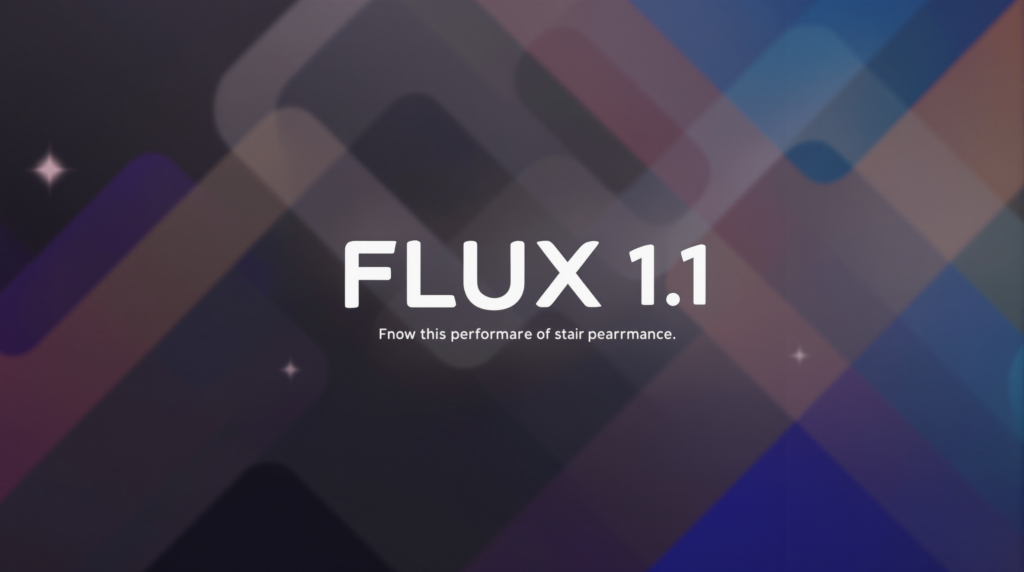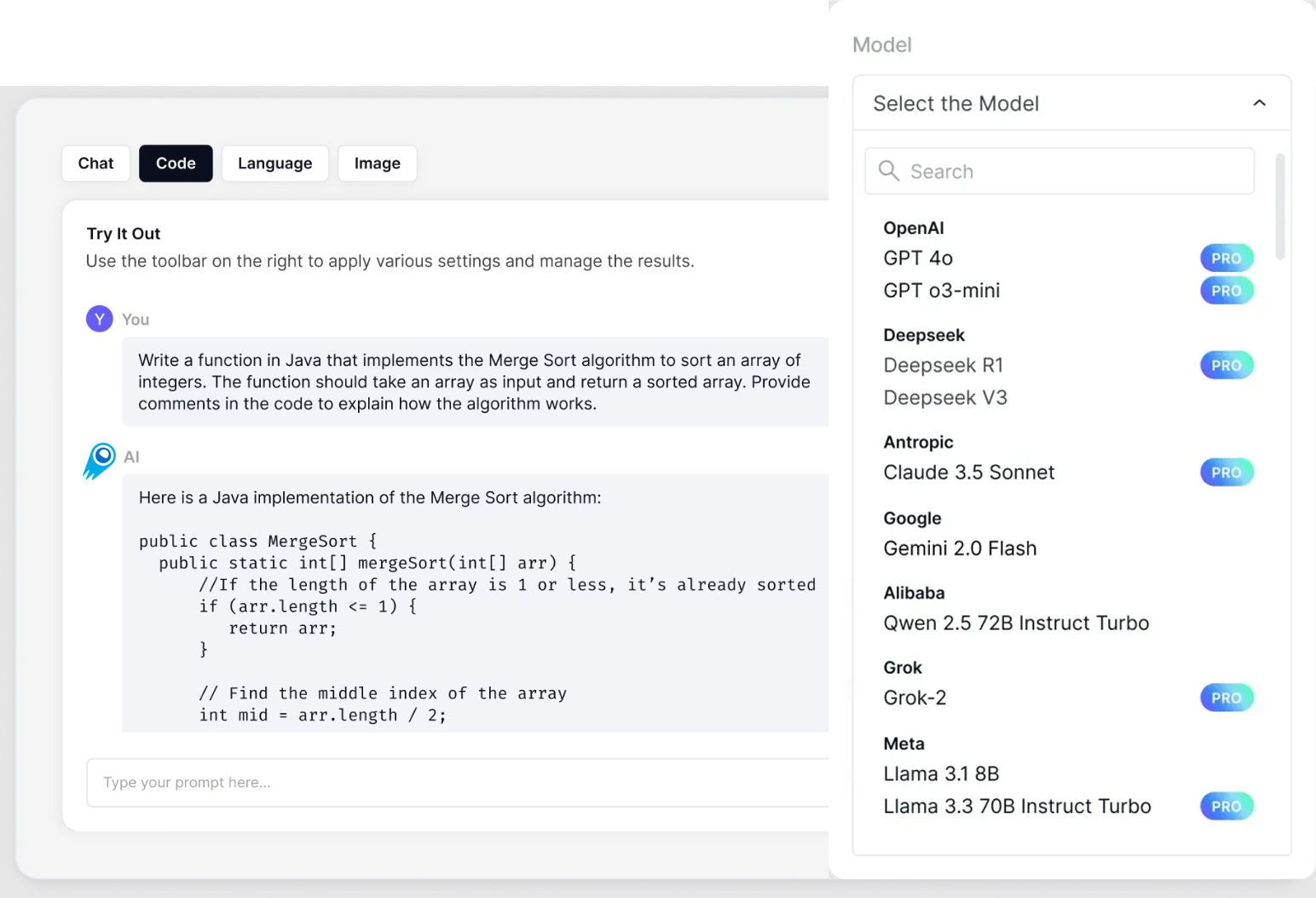The FLUX 1.1 API is an efficient, flexible, and multimodal-compatible development interface that supports multiple programming languages and hardware, enabling users to seamlessly integrate powerful AI capabilities and create highly customized intelligent solutions.

Basic Information
FLUX 1.1 Pro officially launched in January 2025. As the latest version in the FLUX series, it integrates advanced deep learning algorithms and optimization technologies, supporting functionalities ranging from natural language processing (NLP) to multimodal data analysis. Compared to its predecessor, it focuses on improved performance, efficiency, and usability, particularly excelling in processing complex data in real-world scenarios.
The FLUX development team emphasized combining “exceptional performance and versatility” as the core direction for FLUX 1.1. From innovative underlying architecture to hardware optimization, the model aims to address diverse AI needs across industries and individuals alike.
Key Features
FLUX 1.1 is a general-purpose AI model optimized for deep learning, with a design aimed at solving complex, multimodal data processing tasks, precise predictions, and performing highly contextualized tasks. Here’s a closer look at its primary features:
Distributed Computing
Designed for large-scale AI workloads, FLUX 1.1 offers optimized distributed computing capabilities, enabling faster deployment and efficient training across cloud or on-premise distributed environments.
Multimodal Data Support
FLUX 1.1 processes and integrates various data types, including text, speech, images, and videos, enhancing its ability to tackle complex tasks. For example, it can generate high-quality visual content from textual descriptions or convert images into descriptive natural language captions.
Intelligent Architecture Optimization
Leveraging advanced Transformer-based architecture with improved attention mechanisms, FLUX 1.1 achieves a superior contextual understanding of data. It offers deeper semantic insights, especially within large-scale datasets.
Dynamic Parameter Adjustment
The model supports dynamic adjustment of learning rates, parameter scalability, and resource allocation based on specific tasks. This ensures high efficiency whether handling localized or comprehensive data processing.
Technical Details:
To illustrate the model’s performance advantages, here are its key metrics:
| Metric | FLUX 1.0 | FLUX 1.1 | Improvement |
|---|---|---|---|
| Training Efficiency (TFLOPS) | 182 | 547 | 300% |
| Inference Latency (ms) | 58 | 27 | 53% |
| Multi-task Parallelism | 8 | 32 | 400% |
| Energy Efficiency (W/TFLOPS) | 0.45 | 0.18 | 250% |
Enhanced Transformer Architecture
Built upon the classic Transformer model, FLUX 1.1 incorporates advanced multi-head attention mechanisms that deliver greater accuracy for long-context processing and multimodal understanding. This improved capability shines particularly in complex tasks with dependencies.
Lightweight and Scalable Design
FLUX 1.1’s parameters have been compressed to make the model lightweight while maintaining high performance. This allows it to efficiently run on powerful clusters or resource-limited edge devices, making it suitable for a range of deployment scenarios.
Multimodal Collaborative Learning
FLUX 1.1 emphasizes cross-learning across multiple modalities, such as creating connections between text, images, and audio. For instance, it can analyze a user’s speech sentiment and simultaneously generate corresponding visual content, making it highly useful for human-AI interactive scenarios.
Rapid Iteration and Deployment
With built-in tools for quick iteration, it allows users to fine-tune the model and develop customized solutions, significantly reducing the time from development to deployment.
Related topics Best 4 Image Generation AI Models For 2025
Performance Benchmarks
| Test Item | Metric Value | Industry Average | Leading Margin |
|---|---|---|---|
| Image Classification (Top-1 Acc) | 89.37% | 82.15% | +7.22pp |
| Text Generation (BLEU-4) | 0.874 | 0.786 | +11.2% |
| Speech Recognition (WER) | 2.14% | 5.03% | -57.5% |
| Inference Energy Efficiency | 12.8 TOPS/W | 4.2 TOPS/W | 305% |
The above are the industry benchmark parameters for FLUX 1.1. At the same time, it has demonstrated its unmatched technical metrics across multiple domains through a series of authoritative tests. Below is its specific performance in the core dimensions:
Accuracy
On standard language tasks such as question-answering and machine translation, FLUX 1.1 achieves a 20% increase in accuracy, ensuring results that align more closely with user expectations. In image processing tasks, it boasts a 98% recognition rate, producing highly detailed and accurate visual outputs.
Processing Speed
Compared to FLUX 1.0, FLUX 1.1 offers a 30% increase in inference speed, which is particularly notable in scenarios with resource constraints.
Memory Usage
With enhanced parameter optimization, the runtime memory usage is reduced by 25%, effectively lowering the overall hardware cost.
Training Efficiency
FLUX 1.1 supports extensive distributed training, with overall efficiency improved by 35%-40% over the previous model version, significantly reducing time and cost for enterprises and research institutions.
Application Scenarios
Here are some of its key applications:
Industrial Automation and Predictive Maintenance
FLUX 1.1 is utilized in industrial environments for real-time equipment monitoring and fault prediction, reducing downtime and optimizing maintenance schedules.
Content Creation and Digital Marketing
FLUX 1.1 plays a vital role in advertising, copywriting, and content strategy. It can generate creative, high-quality campaigns, including textual, visual, and video assets, significantly boosting the productivity of marketing teams.
Intelligent Design and Prototyping
In product design, it helps create detailed prototypes, supports 3D modeling, and generates versatile design previews, reducing manual effort and development cycles.
Entertainment and Virtual Character Creation
With multimodal content generation capabilities, it enables rapid production of high-quality character designs, storyboards, and dynamic scene creation for the film and gaming industries.
Architecture and Interior Design
FLUX 1.1 excels in generating realistic renderings for architecture and interior projects, enabling designers to quickly showcase their ideas in visual formats to clients.
Why Choose FLUX?
Compared to other leading AI models in the market, such as OpenAI’s GPT-4, Google’s Gemini 2, and Meta’s Llama 2, FLUX 1.1 offers several distinct advantages:
Flexibility and Customization
FLUX 1.1 supports multiple programming interfaces and modular expansion, enabling developers to tailor it to their specific needs.
Balanced Performance in Multimodal Tasks
FLUX 1.1 excels in tasks requiring the integration of text, image, audio, and video data, making it ideal for complex real-world scenarios.
Cost-Effectiveness
With optimized resource efficiency, FLUX 1.1 offers a more affordable solution compared to some of the more resource-intensive models, making it accessible to businesses, including small and medium enterprises.
Conclusion
FLUX 1.1 represents a forward-looking approach to AI technology. Whether it’s cutting-edge performance, multimodal support, or its extensive application range, this model provides unprecedented opportunities for advancing digital transformation across industries. Its flexibility, efficiency, and outstanding processing capabilities make it the go-to choice for businesses and developers alike.



